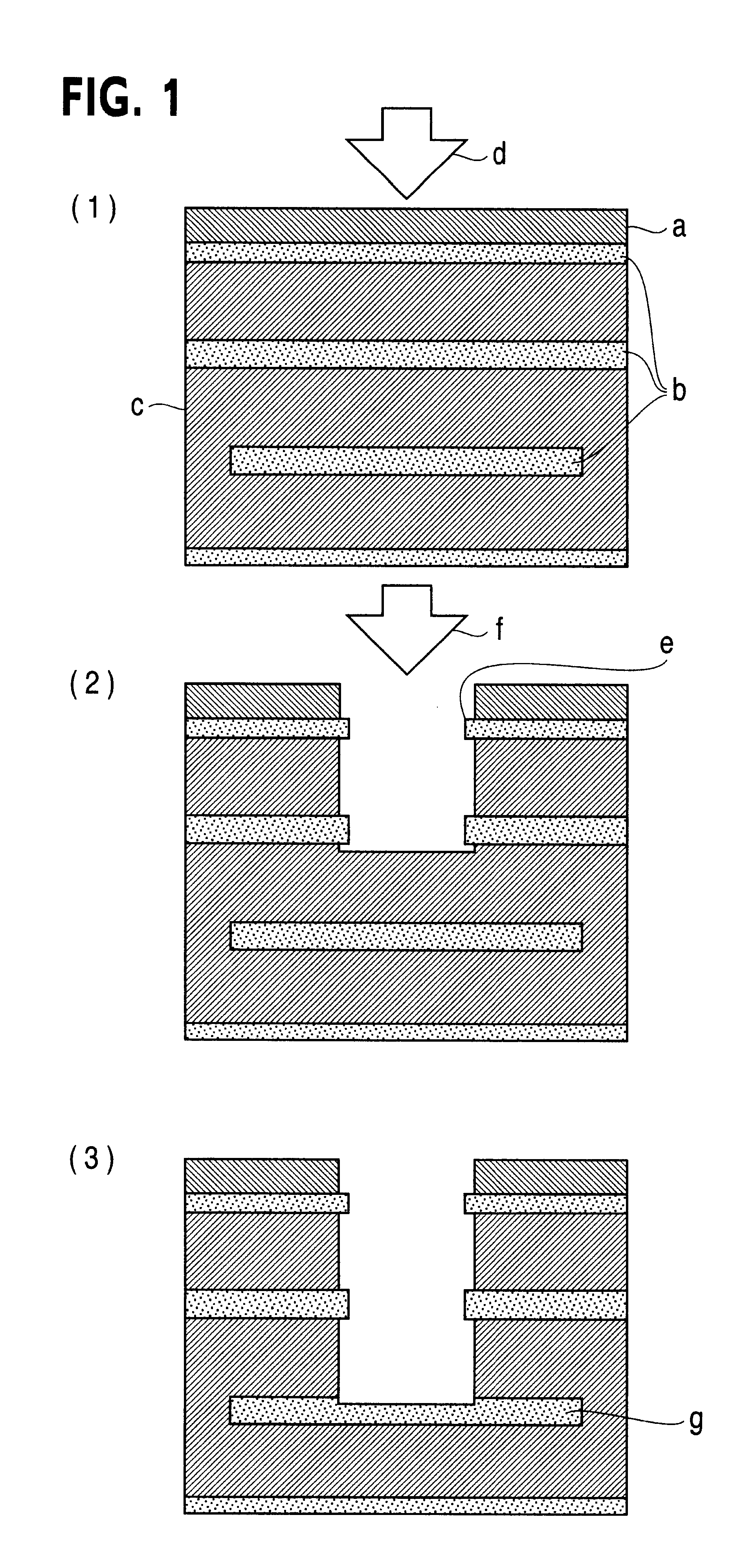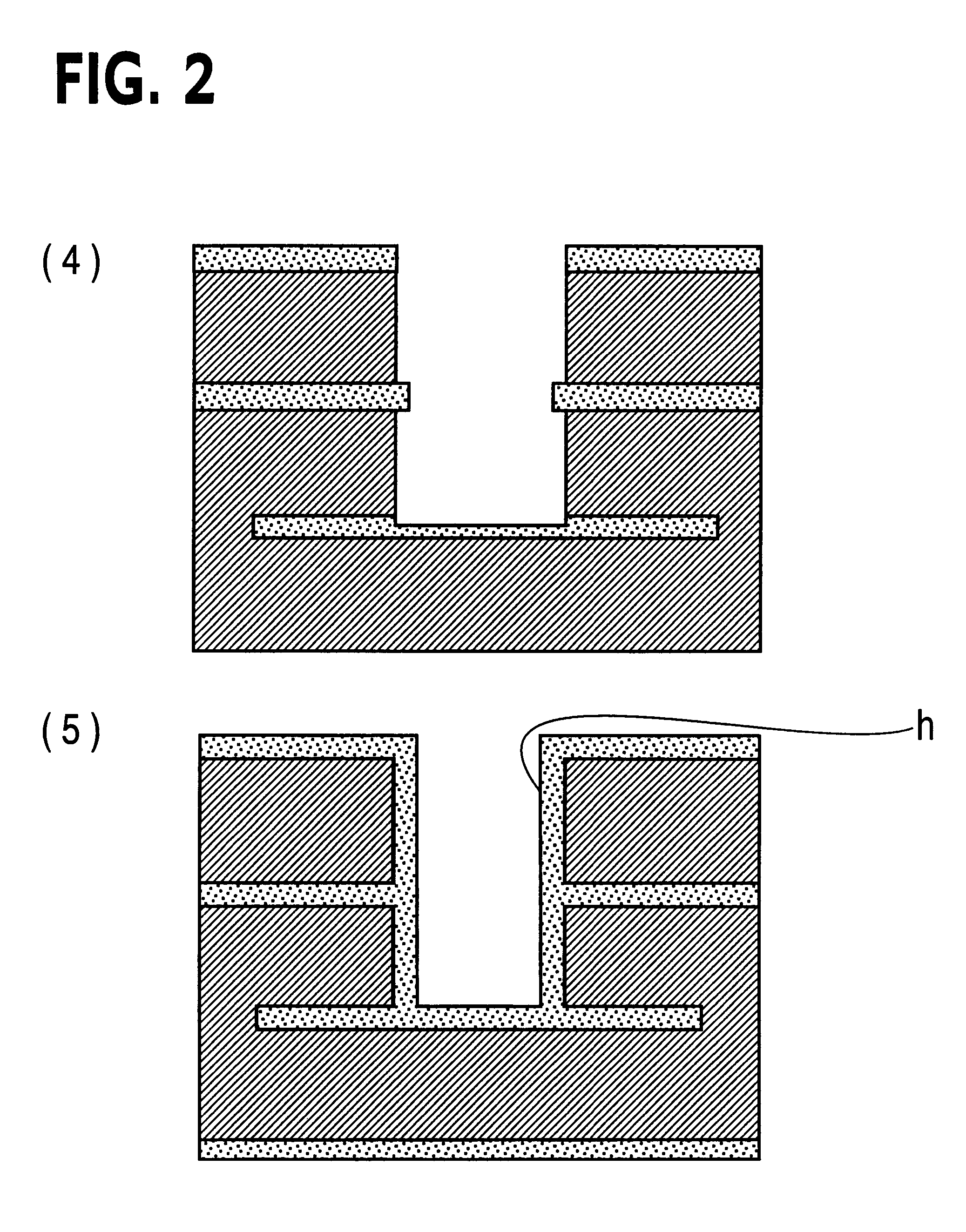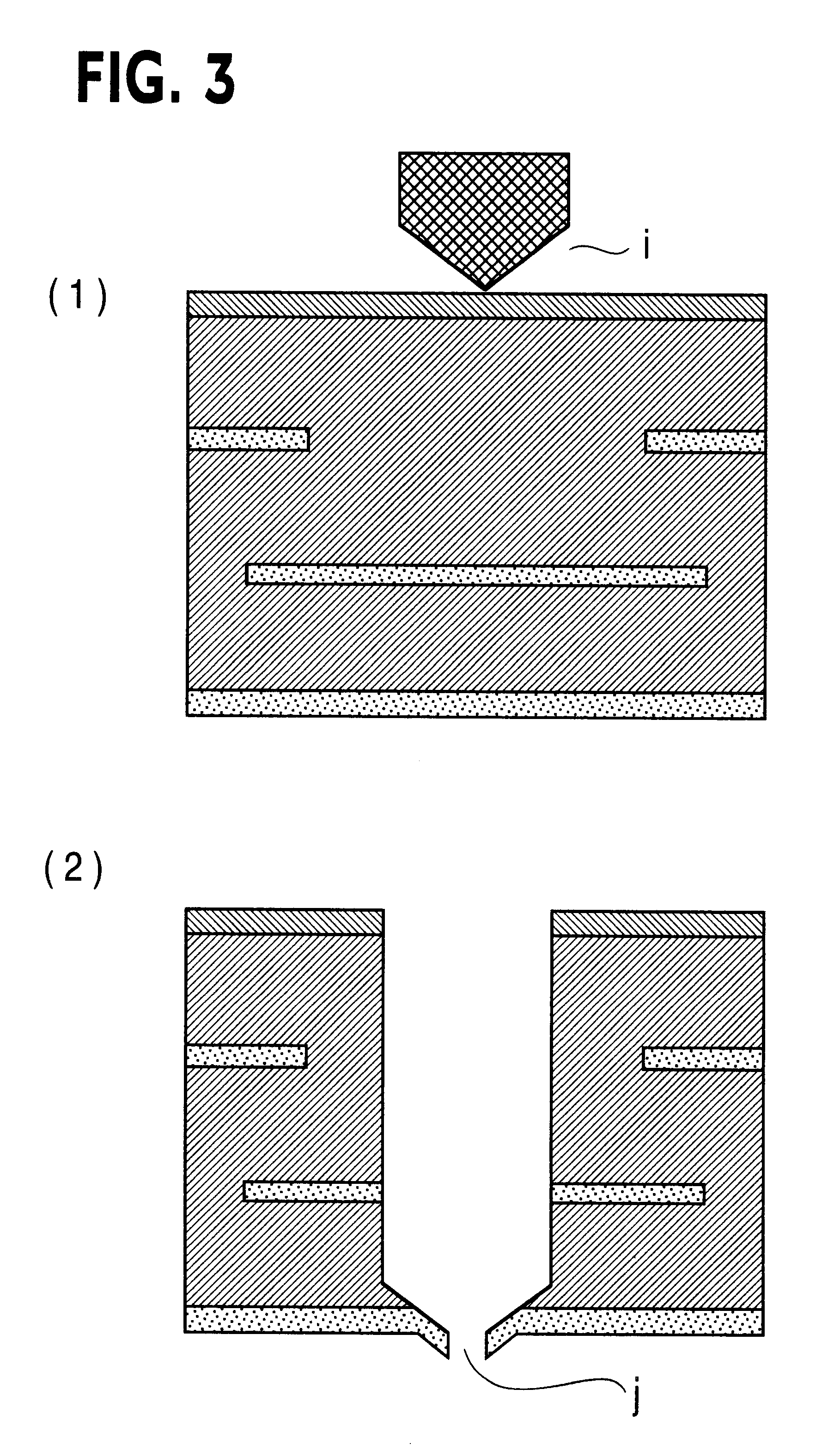Printed wiring board having highly reliably via hole and process for forming via hole
a printing board and highly reliable technology, applied in the direction of resistive material coating, cable/conductor manufacturing, metallic material coating process, etc., can solve the problems of poor reliability in conduction, failure in function, and difficulty in discontinuing the via hole in the middle, so as to improve productivity, high reliability, and processing rate remarkable high
- Summary
- Abstract
- Description
- Claims
- Application Information
AI Technical Summary
Benefits of technology
Problems solved by technology
Method used
Image
Examples
example 1
900 Parts of 2,2-bis(4-cyanatophenyl)propane and 100 parts of bis(4-maleimidephenyl)methane were melted at 150.degree. C. and allowed to react with stirring for 4 hours, to obtain a prepolymer. The prepolymer was dissolved in mixed solvents of methyl ethyl ketone and dimethylformamide. To the resultant solution were added 400 parts of a bisphenol A type epoxy resin (trade name: Epikote 1001, supplied by Yuka Shell Epoxy K.K.) and a cresol novolak type epoxy resin (trade name: ESCN-220F, supplied by Sumitomo Chemical Co., Ltd.), and these materials were homogeneously dissolved and mixed. Further, as a catalyst, 0.4 part of zinc octylate was added, and these materials were dissolved and mixed. To the resultant mixture were added 500 parts of an inorganic insulating filler (trade name: baked talc, average particle diameter 0.4 .mu.m, supplied by Nippon Talc K.K.) and 8 parts of a black pigment, and these materials were homogeneously stirred and mixed to prepare a varnish A. A 100 .mu.m...
example 2
1,400 Parts of an epoxy resin (trade name: Epikote 5045), 600 parts of an epoxy resin (trade name: ESCN220F), 70 parts of dicyandiamide and 2 parts of 2-ethyl-4-methylimidazole were dissolved in mixed solvents of methyl ethyl ketone and dimethyformamide. Further, 500 parts of the same insulating inorganic filler as that in Example 1 was added, and the mixture was forcibly stirred to form a homogeneous dispersion, whereby a varnish D was obtained. A 50 .mu.m thick glass woven fabric was impregnated with the varnish D and the impregnated glass woven fabric was dried to give a prepreg (prepreg E) having a gelation time of 150 seconds and having a glass cloth content of 35% by weight. One sheet of the prepreg E was used, and a 18 .mu.m thick electrolytic copper foil was placed on each surface, and the resultant set was laminate-formed at 190.degree. C. at 20 kgf / cm.sup.2 under a vacuum of 30 mmHg or less for 2 hours, to prepare a double-side copper-clad laminate F. The insulating layer ...
example 3
A sheet with a film having a copper oxide powder content of 20% by volume and having a melting point of 83.degree. C. was prepared in the same manner as in Example 1 except that the 50 .mu.m thick polyethylene terephthalate film used in Example 1 was replaced with a 25 .mu.m thick polyethylene terephthalate film.
The above sheet was laminated on the same double-side copper-clad laminate B as that obtained in Example 1 at 90.degree. C., and the sheet was 2 shots irradiated with a carbon dioxide gas laser at an output of 40 mJ / pulse, to make 900 holes having a diameter of 100 .mu.m each at intervals of 400 .mu.m. Then, an copper foil as an inner layer was 1 shot irradiated with the carbon dioxide gas laser at a decreased output of 7 mJ / pulse to remove surface portions of the copper foil in portions which were to form micro-via hole bottoms. In this manner, micro-via holes were made in 70 blocks (63,000 micro-via holes as a total). Then, the front and reverse surfaces of the board were ...
PUM
| Property | Measurement | Unit |
|---|---|---|
| thickness | aaaaa | aaaaa |
| bond energy | aaaaa | aaaaa |
| melting point | aaaaa | aaaaa |
Abstract
Description
Claims
Application Information
 Login to View More
Login to View More - R&D
- Intellectual Property
- Life Sciences
- Materials
- Tech Scout
- Unparalleled Data Quality
- Higher Quality Content
- 60% Fewer Hallucinations
Browse by: Latest US Patents, China's latest patents, Technical Efficacy Thesaurus, Application Domain, Technology Topic, Popular Technical Reports.
© 2025 PatSnap. All rights reserved.Legal|Privacy policy|Modern Slavery Act Transparency Statement|Sitemap|About US| Contact US: help@patsnap.com



